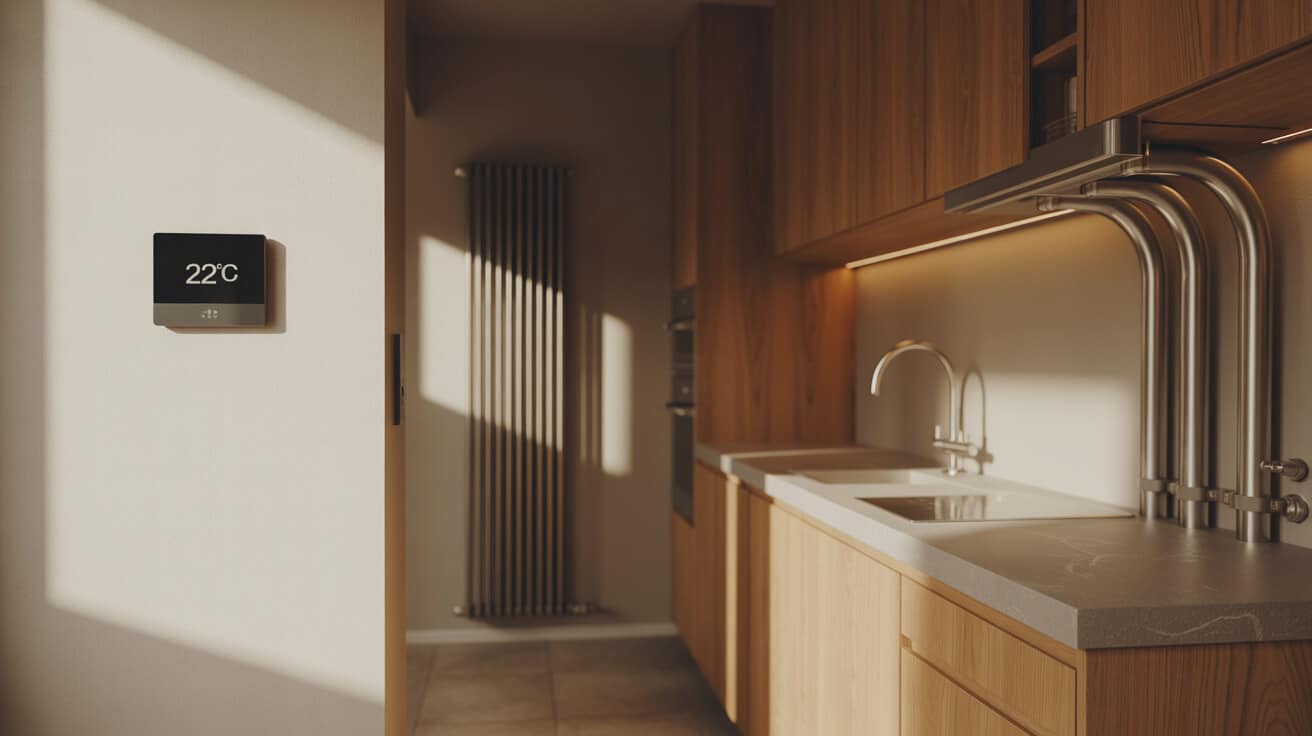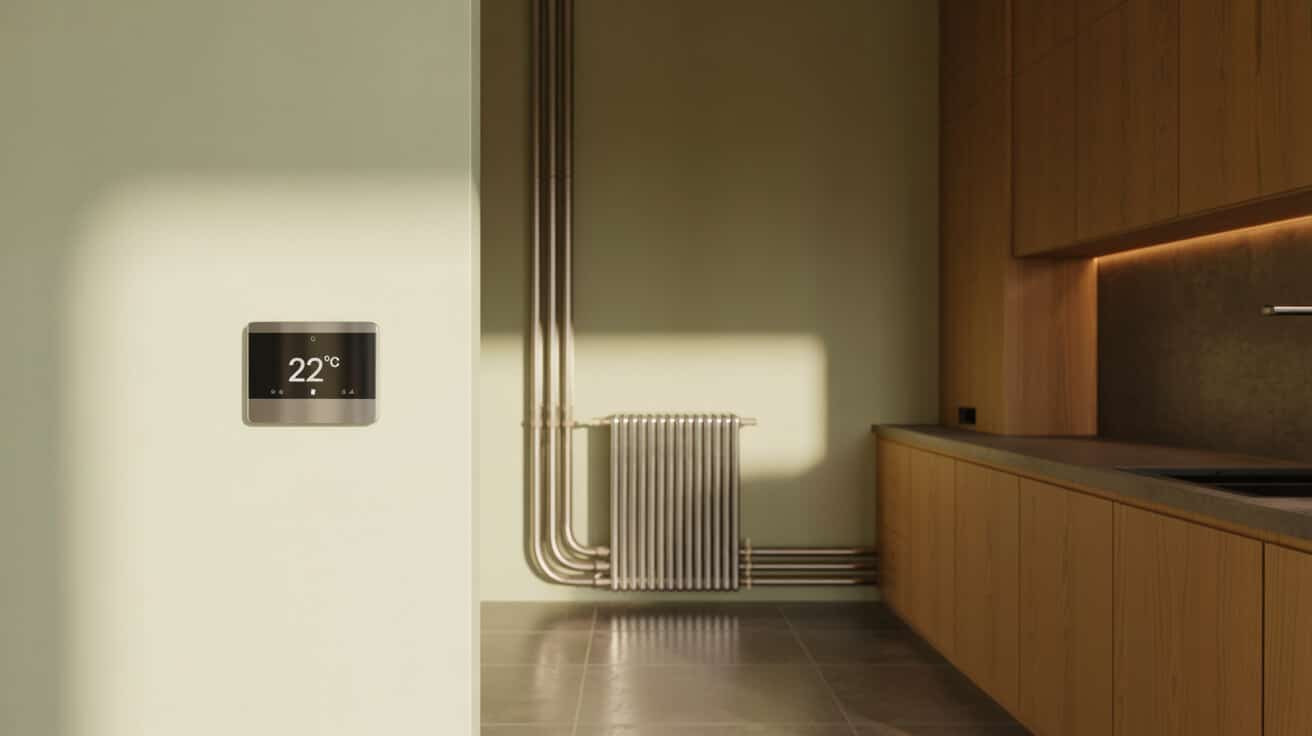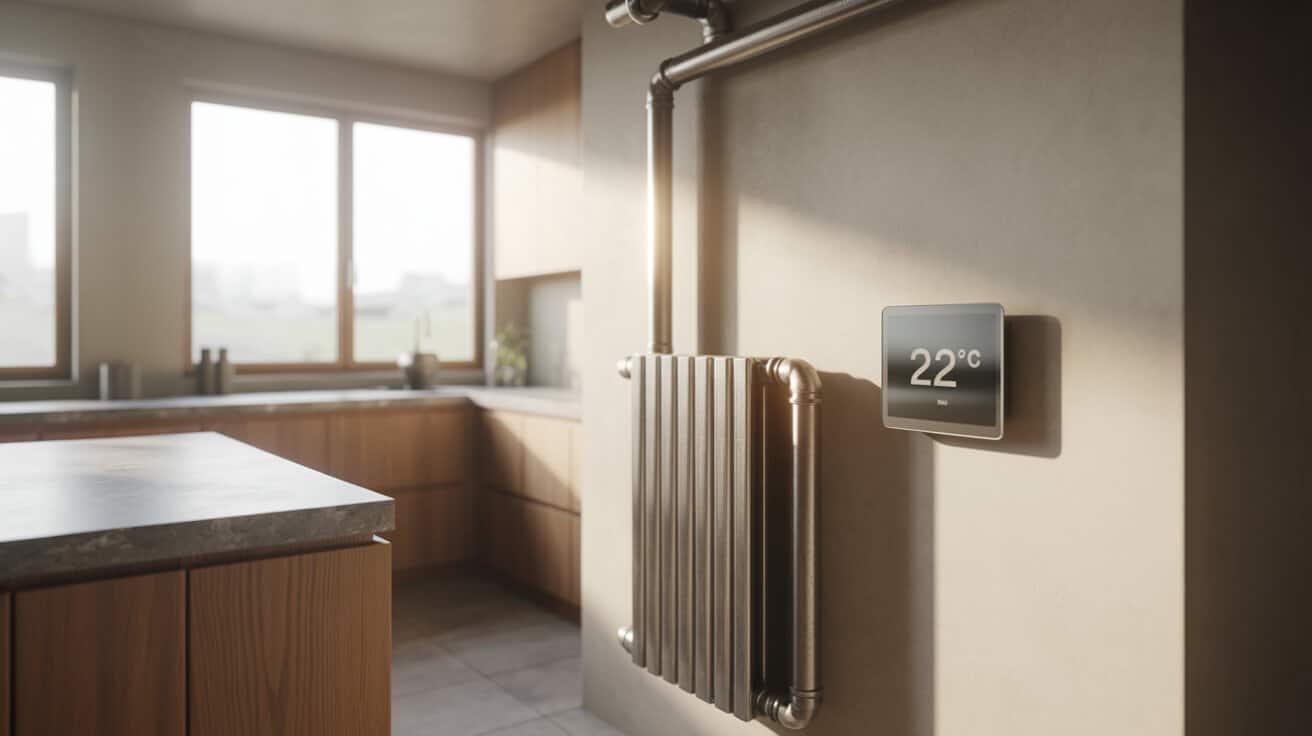Digital thermostatic controls, unlike traditional manual units, deliver more precise temperature management through a blend of data-driven operation and user interaction, strengthening the role of heating engineers and installation specialists in both domestic and commercial settings. Their real-world value manifests in reduced energy consumption, responsive comfort, and the facilitation of centralised and distributed control systems across increasingly diverse building types.
smart thermostats have transformed the domain of heating management through digital intelligence, networked connectivity, and adaptive scheduling. By replacing legacy thermostats, these devices have altered the paradigms of home comfort and energy control, building on embedded sensors and real-time analytics. Your access to heating can be expanded beyond fixed schedules, taking advantage of mobile applications, cloud integration, and learning algorithms designed to streamline your experience and lower energy costs.
The professional deployment of smart heating controls remains the domain of specialised installers, whose knowledge ensures compatibility, regulatory adherence, and tailored commissioning for every property. As energy regulations evolve and consumer priorities change, organisations such as Plumbers 4U have positioned smart thermostat installation as a central pillar of progressive heating and property care services.
Etymology or name origin
“Thermostat” is derived from the Greek word “thermo,” meaning heat, and the root “stat,” relating to control or regulation. The use of the word “smart” in this context denotes a leap from simple mechanical or analogue controllers to a new class of programmable, microprocessor-driven, often network-enabled devices. This linguistic evolution reflects not only the increased technical sophistication but also shifting cultural expectations around automation and ambient intelligence within built environments.
The first mechanical thermostats appeared in the 19th century, usually employing bimetallic strips to open or close a circuit based on temperature change. As domestic heating systems advanced, so too did thermostat terminology and differentiation. The smart thermostat, as a distinct product class, entered the mainstream in the early 2000s with the advent of widespread wireless connectivity and cloud computing.
Overview / context
Smart thermostats occupy a crucial intersection in building technology, uniting the technical demands of mechanical heating with the user-centric priorities of comfort and efficiency. These devices sense, analyse, and respond to conditions in real-time, utilising digital interfaces, scheduling logic, and, in some designs, machine learning to optimise heating behaviour.
Unlike thermostats of previous generations, which managed only basic temperature setpoints with crude mechanical or analogue logic, modern smart controllers support features such as remote activation, multi-zone configuration, dynamic adaptation, and data analytics. These capabilities are delivered not as isolated functionalities but through the seamless integration of sensors, software, and system hardware. For property managers, commercial clients, and homeowners, smart thermostats now represent a base-level expectation for projects seeking to maximise heating system performance and end-user empowerment.
Professional heating companies, exemplified by organisations like Plumbers 4U, routinely incorporate these devices in both new installations and upgrades, ensuring compliance with energy regulations and future-proofing properties for evolving digital infrastructure requirements.
History
Origins
Temperature regulation has a rich historical lineage, dating back to the use of primitive feedback devices in the 17th century. Early thermostats utilised expanding metals or vapour-filled bulbs to trigger mechanical switches. By the mid to late 19th century, devices such as Warren S. Johnson’s electric room thermostat advanced the field, enabling the automatic regulation of steam heating systems in commercial buildings.
Industrial emergence
The 20th century witnessed the proliferation of electromechanical thermostats, the spread of central heating, and the rise of programmable digital thermostats in the 1970s and 1980s. Adjustable timers and limited logic enabled basic day-to-day scheduling, giving users control over system response without real-time feedback. During this period, heating engineers and plumbers became gatekeepers for domestic and commercial installation, advising on system compatibility and ensuring safe, effective control.
Contemporary evolution
Smart thermostats emerged in the early 21st century, propelled by advances in microcontroller technology, wireless networking, and cloud-enabled data storage. Early market pioneers included companies such as Honeywell and Heatmiser, which gradually shifted towards open standards and remote connectivity. By the 2010s, products like the Nest Learning Thermostat and Tado° introduced adaptive scheduling, occupancy sensing, and seamless app-based interfaces, accelerating adoption across a broadening consumer base. Today, the integration of regulatory frameworks such as Boiler Plus and the demand for high-efficiency upgrades have further cemented the relevance of smart thermostat technology within professional heating services and property management.

Concept and description
A smart thermostat is an interconnected system made up of digital processing units, environmental sensors, user-facing interfaces, communication modules, and control relays. These elements work together to continuously monitor ambient temperature (and, in some cases, humidity, occupancy, and weather), adjusting heating outputs accordingly and delivering feedback to users on system status and energy consumption.
Core operating principles
- Sensing: Continuous collection of temperature data from onboard or remote sensors.
- Analysis: On-device processing or cloud-synced logic interprets temperature input, occupancy state, and user preferences.
- Control execution: Commands are issued—directly via relay, OpenTherm, or proprietary communications—to ignite, modulate, or deactivate heating systems.
Key components
- Main control unit: Typically wall-mounted or centrally located, serving as the data hub and user interface.
- Sensors: Embedded or remote, measuring temperature, humidity, proximity, motion, or occupation.
- User interface: Local display (LCD/touchscreen), mobile or web-based dashboards.
- Connectivity modules: Wi-Fi, Zigbee, Z-Wave, RF, Bluetooth, or wired protocols like OpenTherm.
User interaction and learning logic
Users can schedule custom patterns, set adaptive programmes, or permit learning-mode operation based on observed habits. The interface often integrates visualisations showing energy use, runtime history, and predictive comfort analytics. Advanced models analyse occupancy and weather to preheat homes for predicted arrivals or reduce set-points in unoccupied zones, driving comfort and lower costs.
Functionality, purpose, and applications
Operational objectives and energy management
Smart thermostats are engineered to automate, optimise, and personalise the thermal environment of buildings, with enhanced flexibility around:
- Programmability: Multiple schedules for working days, weekends, or holiday periods.
- Remote control: System access from your smartphone or browser, facilitating heating adjustments from any location.
- Learning and adaptation: Some devices observe and remember how you interact, adjusting future schedules for optimal comfort and efficiency.
- Weather compensation: Devices can lower or raise setpoints in response to forecasted or measured external temperature changes.
Domestic installations
In homes, the motivation for installation often centres on improving comfort, reducing bills, and ensuring peace of mind. Smart thermostats enable zoning, multi-room control, and rapid diagnostics—either directly or by enabling your heating service provider to support you remotely. The ability to visualise historic energy use and derive actionable insights is now part of the standard homeowner experience.
Property management and landlord engagement
For property managers and landlords, smart controls represent an opportunity to centralise oversight, automate regulatory compliance, distribute heating costs accurately, and address tenant service needs with lower response times. Professional installation ensures systems are commissioned appropriately for the complexities of multi-occupancy and rented environments.
Commercial and institutional deployment
Smart thermostats are deployed in offices, healthcare, education, and retail settings to rationalise energy use, enable granular control by facility area, and supply analytics for maintenance or sustainability reporting. The capacity for centralised management, grouped scheduling, and remote support increases organisational resilience and system efficiency.
Accessibility and compliance
Certain systems introduce specialised interfaces or compatibility options for users with disabilities, ensuring inclusivity in building usability and regulatory compliance regarding the minimum heating standards or energy reporting requirements.
Classifications, types, and variants
Categories by device capability
- Programmable thermostats: These offer fixed scheduling, allowing specific time-based programming of heating system cycles. Their user interface typically involves pushbuttons or simple touchscreens, appropriate for users prioritising predictable routines.
- Learning/adaptive thermostats: These utilise learning algorithms to adjust setpoints, schedules, and timing according to detected occupancy and your behavioural patterns, providing a more dynamic and tailored comfort experience.
- Zoning-ready and multi-zone solutions: Support independent control across numerous rooms or building sectors, either through central logic or add-on devices such as smart radiator valves or underfloor heating relays.
Topology and integration
- Wired units: Installed using traditional low-voltage or mains cabling, these are favoured in larger or new-build properties for their reliability.
- Wireless units: Utilise radio frequency, Wi-Fi, or mesh protocols, simplifying retrofit scenarios and reducing installation time and disruption.
Brand landscape and ecosystem
Devices available in the UK and European markets include Nest, Tado°, Drayton Wiser, Honeywell Evohome, Heatmiser Neo, and proprietary boiler-associated controllers from major manufacturers. Selection depends on compatibility, user interface preference, intended property type, and support for future regulatory changes.
Systems, tools, and methodologies
Compatible systems and deployment environments
Smart thermostats may control a diverse array of heating systems, including:
- Boilers: Combi, system, regular, and Condensing Boilers.
- Heat pumps: Air or ground source, requiring specific protocol compatibility for modulation and weather compensation.
- Underfloor heating: Integration via time or temperature control of manifold actuators and pump sets.
- Multi-room radiator systems: Managed using programmable radiator valves, facilitating room-by-room thermal zoning.
Professional installation and toolkit requirements
Installation typically involves:
- Pre-installation survey – confirming compatibility between system, thermostat, and wiring structure.
- Electrical isolation and safety checks – adhering to Part P requirements.
- commissioning via manufacturer-specific or universal setup applications.
- Calibration and handover – personalising device routines and schedules according to occupant need.
Configuration methodologies
Deployment by Plumbers 4U and similar service-oriented organisations emphasises not just the technical aspects but also user training and ongoing support, guaranteeing optimal system use and regulatory adherence.

Stakeholders and involved entities
The supply, installation, use, and maintenance of smart thermostats involve a complex chain of stakeholders:
Manufacturers and certification bodies
- Device manufacturers: Design and supply thermostats, ensuring adherence to safety, compatibility, and regulatory certifications.
- Standards organisations: Oversee compliance with CE/UKCA, WRAS, and Boiler Plus benchmarks, among others.
Professional plumbing and heating engineers
Professional installers conduct compatibility assessments, carry out electrical and functional installation, provide user onboarding, and maintain a relationship for firmware or repair support. These roles are critical in minimising risk, reducing errors, and maximising device lifespan and utility.
End-users and property stewards
- Homeowners: Seek intuitive, cost-effective comfort solutions supporting sustainable living.
- Landlords and property managers: Require reporting, access controls, and regulatory compliance features.
- Facilities managers: Focus on scalable installations, energy reporting, and high uptime for critical environments.
- Tenants: Benefit from transparent operation, comfort, and data privacy, especially in shared or regulated housing.
Organisational and regulatory actors
Organisations such as the Chartered Institute of Plumbing and Heating Engineering, Gas Safe Register, and local building control authorities define training, practice standards, and policy boundaries for device deployment.
Legal, regulatory, and ethical considerations
Regulatory frameworks
Smart thermostat installation in the UK must comply with a series of building and electrical regulations:
- Part P: governs the electrical integrity of installation, requiring qualified personnel and, in some cases, building control notification.
- Part L: establishes minimum energy and carbon reduction standards, pushing programmable controls and weather compensation features as base requirements in new or upgraded heating systems.
- Boiler Plus: sets consumer-facing standards for energy efficiency in heating control upgrades and replacements, explicitly requiring programmable, smart, or compensating control logic.
- WRAS and CE/UKCA markings: confirm device suitability in potable water contexts and overall product safety.
Data security and user privacy
Smart thermostats routinely collect operational and, in some designs, occupancy or geolocation data. GDPR and similar frameworks make it incumbent on manufacturers and property stewards to implement robust data privacy policies, enable opt-in/opt-out procedures, and offer transparency over the storage and processing of personal information.
Landlord and tenant rights
heating control upgrades in rental accommodation are subject to both explicit contractual approval and consumer protection provisions. Protection from “lock-outs,” data misuse, or unplanned system downtime are all essential aspects. Failure to maintain adequate, functioning controls may also violate habitation or health and safety statutes.
Ethical dimensions
As property control becomes more mediated by technology, ethical considerations expand to questions of fairness, accessibility, and inclusivity, as well as the right to understand, override, or challenge automated decision-making processes.
Performance metrics, data, and measurements
Technical and operational metrics
- Temperature and scheduling accuracy: Key parameters include ability to hold setpoints and adapt to schedule deviations within specified tolerances.
- Energy efficiency: Typically measured as reduced fuel consumption or bill reduction, with savings documented through third-party studies and device-generated analytics.
- Remote diagnostics and support: Features that support maintenance, reduce callouts, and increase system uptime.
| Metric | Typical Range | Measurement Method |
|---|---|---|
| Setpoint accuracy | ±0.2 to ±0.5°C | Device calibration checks |
| Energy savings | 8% – 25% | Comparative energy analysis |
| Schedule flexibility | Minute-interval setting | User interface review |
| Wi-Fi connectivity | 2.4GHz/5GHz; mesh/RF | Installation audit |
User engagement and analytics
Modern systems present dashboards for historical use, trend identification, and optimization suggestions. These features facilitate both homeowner behavioural change and professional support interactions.
Challenges, barriers, and limitations
Operational or technical issues
- Compatibility obstacles: Legacy wiring, non-standard boilers, hybrid systems, and multi-zone environments can complicate installation.
- Wire-free limitations: Wireless signal can be disrupted by building materials, distance, or competing RF devices.
- Complex integration: Some properties combine multiple heating logic paradigms—requiring advanced systems configuration or workaround installations.
Social and economic factors
- Initial cost: Smart thermostats are more expensive than manual controls, though installation costs can be offset by ongoing savings.
- Adoption gap: Renters, those in social housing, and elderly consumers may not engage with the technology due to cost, unfamiliarity, or perceived complexity.
- Training and support: Provision of user education, ongoing documentation updates, and rapid troubleshooting remains essential for maximising benefits.
Data privacy and ethics
- Consent and transparency: Collection, storage, and interpretation of behavioural data must comply with legal and ethical frameworks.
- Risk of over-automation: Automated systems that override or ignore user preferences may create frustration or unease, especially in shared living arrangements.
Philosophical policy questions
- Control versus autonomy: Balancing the value of automated efficiency with your right to set, change, or override heating schedules remains a matter of active debate in housing policy and technical design.
Impact, influence, and legacy
Smart thermostats, through measurable improvements in comfort and efficiency, have shifted both technical practices and end-user expectations. Wide adoption has supported decarbonization efforts, reducing the carbon footprint and operating costs of millions of properties. For professional plumbing and heating companies—such as Plumbers 4U—the need for advanced system knowledge has sparked new service categories and required ongoing staff training, keeping operations ahead of market and regulatory change.
The normalisation of remote diagnostics, predictive maintenance, and system health monitoring has elevated property stewardship standards. Property managers and facilities directors can now benchmark performance, proactively identify inefficiencies, and centralise oversight—all contributing to more sustainable and reliable asset management.
Future directions, cultural relevance, and design discourse
The future of smart thermostatic control in heating aligns with the continued evolution toward sustainable, connected, and responsive buildings.
Adaptive and machine learning algorithms
Expect further evolution in learning models, with devices harnessing not just past behaviour but also external signals—weather, electricity pricing, and occupancy—to optimise control in real time.
Renewables and grid integration
The convergence with renewable energy sources and dynamic grid demands will make thermostats central to demand-side management, enabling properties to proactively balance load and carbon.
Technological progress will require parallel advances in accessibility, data privacy, and regulatory justification. The cultural footprint of smart heating will continue to expand as automation and digital agency become more deeply woven into residents’ experience of the built environment.
The role of professional services
Plumbers 4U and similar organisations will increasingly be charged with not just installation but ongoing education, compliance auditing, and support for a growing ecosystem of interoperable building controls. The success and acceptance of smart heating technology depend as much on trust, clarity, and user-centricity as on technical merit.

